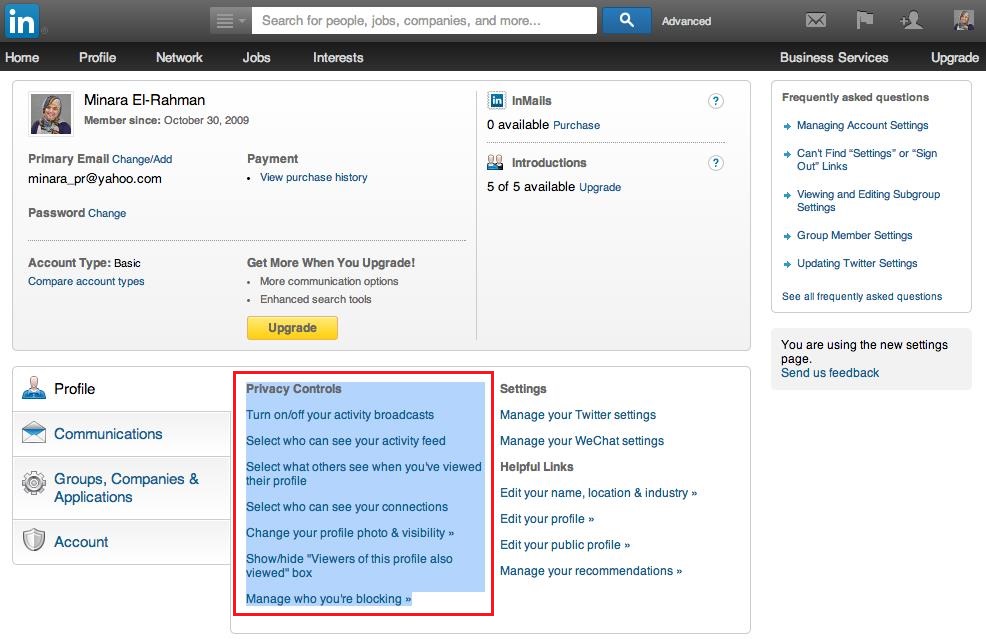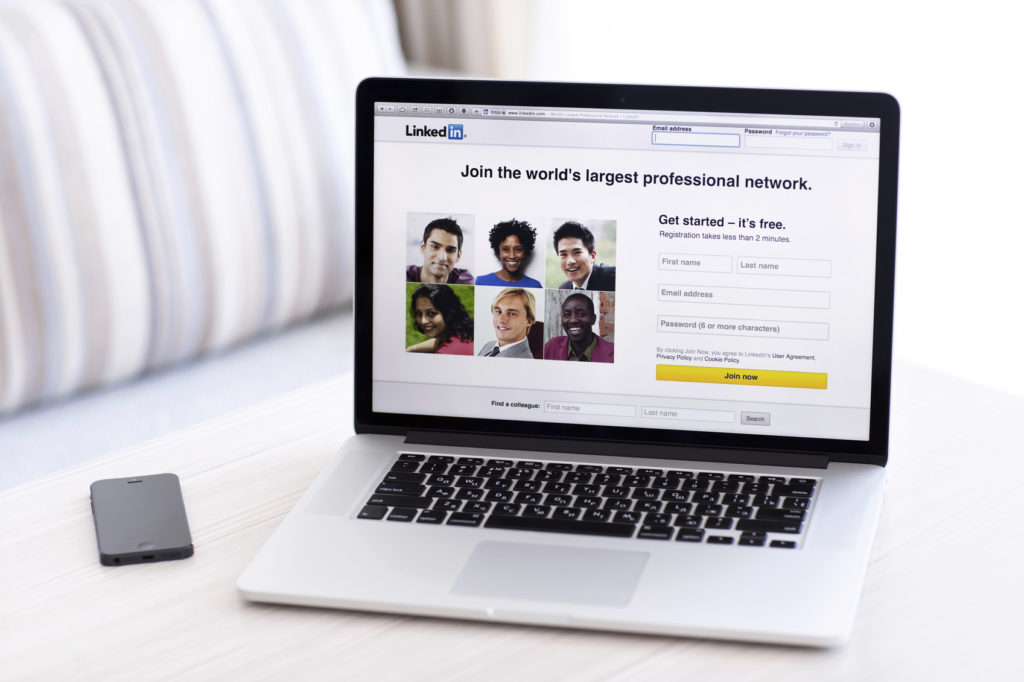Simpson Strong-Tie was built on the idea of making strong connections. That concept extends beyond our structural innovations for raising or supporting strong, resilient buildings and communities. We use social media and our two company blogs to have conversations not only about our products and services, but also about the values and mission of our company. Here are several of the ways you can tell us about your experiences with Simpson Strong-Tie, learn more about our company or ask us questions.
Continue Reading
Tag: social media
5 Tips to Stay Informed on Construction News and Industry Updates
For a structural engineer working on multiple projects in various stages of design and construction, it can be challenging to keep up to date on the latest industry trends. However, many of us in the construction industry enjoy learning about new construction techniques and unique projects. Being educated about new technology and design tools can also increase efficiency in the office.Continue Reading
Facebook Tips for Structural Engineers
 In our last social media–related blog post, I shared the Top 5 LinkedIn Groups to Follow for Structural Engineers. Following groups on LinkedIn allows you to share content, post or view job openings, network and help establish yourself as a key opinion leader in your industry. But what about critical design questions or help? How do you deal with office dynamics or a difficult client as a structural engineer?
In our last social media–related blog post, I shared the Top 5 LinkedIn Groups to Follow for Structural Engineers. Following groups on LinkedIn allows you to share content, post or view job openings, network and help establish yourself as a key opinion leader in your industry. But what about critical design questions or help? How do you deal with office dynamics or a difficult client as a structural engineer?
LinkedIn groups may assist with questions like these, but there are other social media platforms that might make it easier to have a more in-depth discussion about issues that you face. While LinkedIn is certainly an important social media platform for professionals such as structural engineers, it is not the largest social media platform. That title goes to the social media giant Facebook. Facebook has the social advantage of engaging more than 1.7 billion active users.
You are probably using Facebook already for personal social networking. However, there are some professional applications for structural engineers on Facebook that you may not have heard about. Here are some Facebook tips for structural engineers that you can use to jumpstart your professional social media arsenal:
Follow Industry-Related Pages
There are a variety of pages that you can follow on Facebook to give you an idea of what is happening in the industry. Following and engaging with pages like Structural Engineering World for design inspiration or Civil + Structural Engineer magazine for project management ideas allows you to have a more professionally focused newsfeed around content that matters to you (while still allowing time for cat memes and Buzzfeed quizzes if you want those, too). One useful page for engineers is the Autodesk Revit page, because it has things like tips on how to share large BIM files.
Join Structural Engineering Groups
Groups are a great way to connect with other Facebook users. As a structural engineer, you are bound to come across an issue that you would like some advice on. By joining a group of other structural engineers, you can ask design questions, questions about calculations and get tips on the best tools for your profession. I would ask your colleagues which groups they recommend joining.
Jumpstart Your Job Search
If you are looking for a new position, I am sure that you already know about LinkedIn. But did you know that there are things like the Career Center App on Facebook pages like the ASCE? The app works for employers looking to hire, too!
Do you have Facebook tips that would you recommend for structural engineer? Let us know in the comments below.
Top 5 LinkedIn Groups to Follow for Structural Engineers
A while back, we posted about how structural engineers can use social media like Facebook, Twitter and LinkedIn. We discussed how structural engineers can use LinkedIn as a tool to find out more about industry news. While that is one way to use LinkedIn, another way to get even closer to the pulse of your industry is to join industry-specific LinkedIn groups.
LinkedIn groups are places within LinkedIn that allow professionals to share content, post or view job openings, network, and help establish key opinion leaders in a particular industry.
If you are new to LinkedIn, it can be challenging to find all of the LinkedIn groups that you may want to join. We compiled a list of structural engineering LinkedIn groups that can help you get started:
American Society of Civil Engineers (ASCE): This group was initially formed to allow networking between engineers. It has now grown to over 200,000 members and includes other professionals who work in the industry. Since this is a large group, there are more focused sub-groups that you can also join. We recommend using the ASCE group for general information.
ASCE: Structural Engineering: This is a sub-group of ASCE. The members of this LinkedIn group are mainly structural engineers. This is a good place for discussion and asking for feedback on work-related topics.
American Concrete Institute: This is a great group for structural engineers who work with concrete. You can connect not just with engineers, but also with professionals in the concrete production, design and construction industries.
SEAOC-Structural Engineers Association of California: If you are a structural engineer in California, we highly recommend this group. If you are interested in structural and seismic engineering, this is the group to join.
NCSEA: The National Council of Structural Engineers Associations (NCSEA) is a great group to join to get industry information, find resources including webinars, and hear about local industry events and meetings.
While there are a lot more LinkedIn groups, we hope that the ones we have shared are useful for you. What LinkedIn groups do you recommend? Let us know in the comments below.
LinkedIn Best Practices for Structural Engineers
As many of you know, LinkedIn is a social networking website specifically aimed at business professionals and is designed to help you  connect and network with people you know and trust. You can add colleagues, peers and others as contacts and send them messages. You can create and update your personal profile to let your contacts know about your professional activities, and both recommend or endorse your contacts and get recommended or endorsed by your contacts for your professional skills. In addition, you can join groups to communicate with other professionals within the same sector or industry. You are also able to ask and answer industry-related questions, and to learn about and apply for job openings.
connect and network with people you know and trust. You can add colleagues, peers and others as contacts and send them messages. You can create and update your personal profile to let your contacts know about your professional activities, and both recommend or endorse your contacts and get recommended or endorsed by your contacts for your professional skills. In addition, you can join groups to communicate with other professionals within the same sector or industry. You are also able to ask and answer industry-related questions, and to learn about and apply for job openings.
A basic membership on LinkedIn is free, but you can also upgrade your account in order to have access to professionals outside of your network.
To help guide you, here are some best practices for how to set up and optimize your LinkedIn account.
Update and Complete Your Profile
 Having a complete and updated profile on LinkedIn allows you to put your best face forward. Make sure to summarize your role and responsibilities and current and past work experience, highlighting the details you think will make a prospective customer want to work with you. Include a professional-looking headshot and your current contact information. LinkedIn will even tell you your profile strength on the right-hand rail.
Having a complete and updated profile on LinkedIn allows you to put your best face forward. Make sure to summarize your role and responsibilities and current and past work experience, highlighting the details you think will make a prospective customer want to work with you. Include a professional-looking headshot and your current contact information. LinkedIn will even tell you your profile strength on the right-hand rail.
Join Industry Specific Groups
Joining groups that are relevant to our industry will allow you to participate in online industry discussions. Answering questions related to your field of expertise within these discussions is an excellent way to position yourself as an authority and build your professional reputation. Here are some structural engineering groups that you can start with:
SEAOC-Structural Engineers Association of California
Forge Connections
Connect with people you already know using your email contacts. This will help you maintain your existing relationships as well as branch out to connect with industry-related people your contacts may know. Another great feature of LinkedIn is that it will tell you “People You May Know” based on where you work or are already linked to. This feature will help you find meaningful connections.
Follow the Company Page and Share Posts
Simpson Strong-Tie has a company LinkedIn page to connect with customers. Company pages are a way to keep up to date on trends in design and building materials, code changes, product launches and other industry news. Make sure to follow the Simpson Strong-Tie company page so that you can stay informed about our latest news and updates.
Make sure to review and manage your privacy settings to help you control how many people can view your activities and personal information. You can do this by hovering your mouse on your thumbnail image on the far right- hand side of your home page. You should see an Account & Settings drop-down menu appear with an option that says “Privacy & Settings: Manage.” Click this option. Once you are there, you can manage all of your privacy settings.
You should see an Account & Settings drop-down menu appear with an option that says “Privacy & Settings: Manage.” Click this option. Once you are there, you can manage all of your privacy settings.
How do you use LinkedIn as part of your engineering career? Let us know in the comments below.




